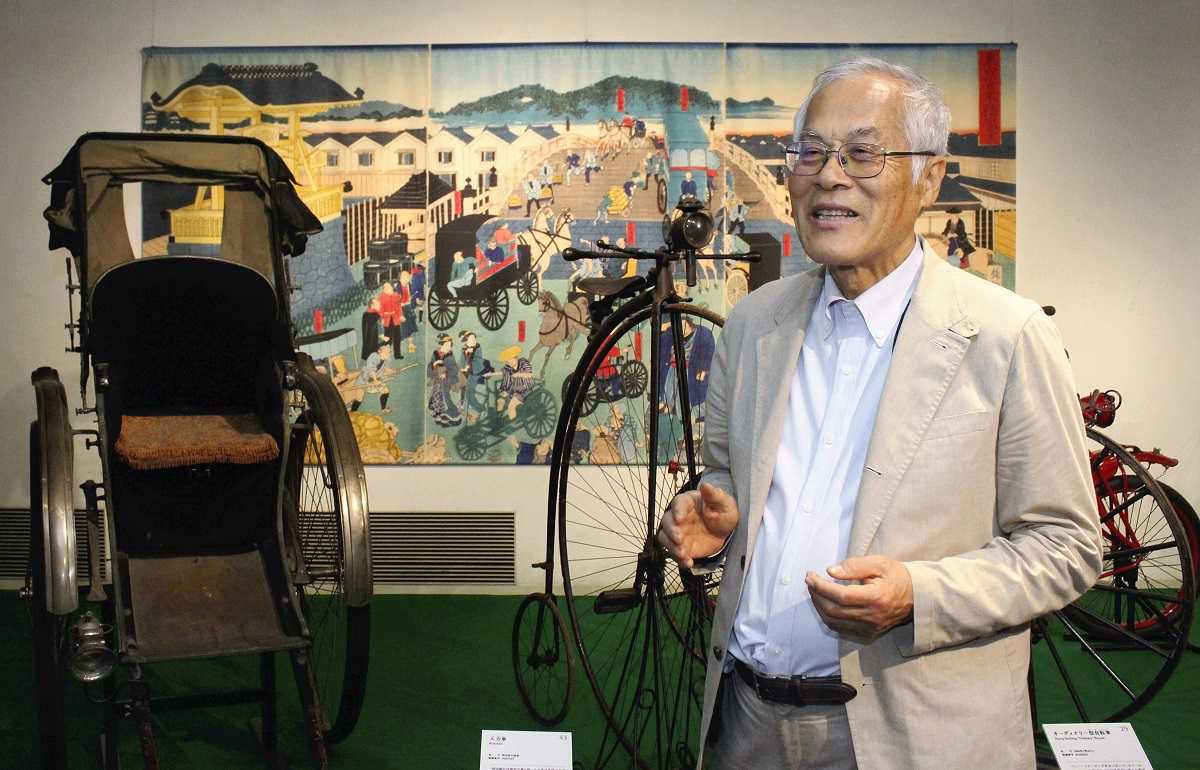Edo-Tokyo Architectural Museum Celebrating its 30th Anniversary; Drawing Visitors with Nostalgia

Visitors walk near reconstructed traditional buildings at the Edo-Tokyo Open Air Architectural Museum in Koganei, Tokyo, early this month.
15:37 JST, April 9, 2024
The Edo-Tokyo Open Air Architectural Museum in Koganei, Tokyo, is running a special exhibition to celebrate its three-decade history of relocating and preserving traditional buildings.
The museum was opened in March 1993 as an annex of the Edo-Tokyo Museum in Sumida Ward, Tokyo. The architectural museum in Koganei park has reconstructed 30 buildings dating from the Edo period (1603-1867) to the middle of Showa era (1926-89), after these buildings were demolished in original locations and relocated to the park, as it was difficult to restore them in their original state. So far, it has drawn in about 7 million visitors.
The reconstructed buildings include the house of Korekiyo Takahashi (1854-1936), which was relocated from Minato Ward, Tokyo. Takahashi was a finance minister who was killed at this house by young Imperial Japanese Army officers when they stormed it as part of an attempted coup in 1936, known as the Feb. 26 Incident.
Another famous building is Takei Sanshodo, a stationery store originally built in Chiyoda Ward, Tokyo. Its interior is said to have served as the inspiration for a room in Studio Ghibli’s “Sen to Chihiro no Kamikakushi” (“Spirited Away”).
Also on display are farmhouses with thatched roofs, along with a public bathhouse and an izakaya bar, which were both relocated from Tokyo’s shitamachi old area.
The restored structures evoke nostalgic feelings, bringing people back to a different era. “I hope visitors will take a look at the lifestyle of the past, as urban areas today are going through major, rapid changes,” said Terunobu Fujimori, director of the Edo-Tokyo Museum.

Terunobu Fujimori, director of the Edo-Tokyo Museum, discusses a special exhibition being held at the architectural museum.
The special exhibition, titled “Life and Transportation in Edo-Tokyo,” running through July 7, showcases about 70 items from the museum’s collection.
One highlight of the exhibition is part of a rickshaw that is elaborately decorated with maki-e, a lacquer art technique using powders of gold, silver and other colors. Shown to the public for the first time, the rickshaw part includes a painted image of a samurai on horseback.
This rickshaw dates back to the early days of the Meiji period (1868-1912). Because rickshaws with maki-e decorations were no longer produced after becoming subject to government regulations in 1886, the one on display at the exhibition is the only example known to have survived to today.
“When it comes to rickshaw, we usually think of black-coated ones,” said a visitor from Higashi-Kurume, Tokyo. “I’ve never seen a design like this, so [the rickshaw decorated with maki-e] is really interesting.”
The Edo-Tokyo Open Air Architectural Museum opens from 9:30 a.m. to 5:30 p.m. and is closed on Mondays. For details, visit web site .
Related Tags
"Features" POPULAR ARTICLE
-

Sanrio to Open Museum in Yamanashi Pref. Dedicated to Founder, Exhibits Include Hello Kitty, Other Characters
-

Autumn Foliage Surrounds Visitors to Tokyo’s Showa Kinen Park
-

My Daughter No Longer Speaks to Me, But I Want to See Her and My Grandchild
-

Kumamoto: Public Bath Refurbished as Library Where You Can Chat, Take Photos
-

Frozen Vegetables: Demand Rises for Convenient, Tasty Domestic Produce
JN ACCESS RANKING
-

Tokyo Economic Security Forum to Hold Inaugural Meeting Amid Tense Global Environment
-

Keidanren Chairman Yoshinobu Tsutsui Visits Kashiwazaki-Kariwa Nuclear Power Plant; Inspects New Emergency Safety System
-

Imports of Rare Earths from China Facing Delays, May Be Caused by Deterioration of Japan-China Relations
-

University of Tokyo Professor Discusses Japanese Economic Security in Interview Ahead of Forum
-

Japan Pulls out of Vietnam Nuclear Project, Complicating Hanoi’s Power Plans

























